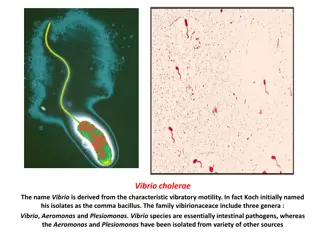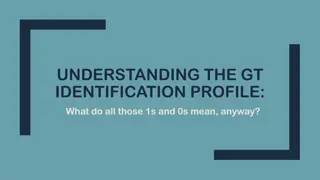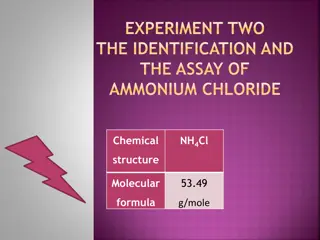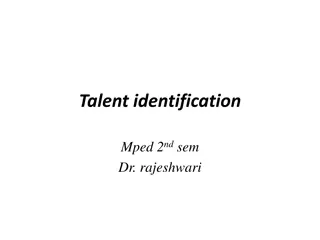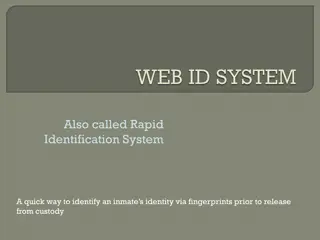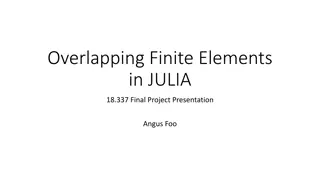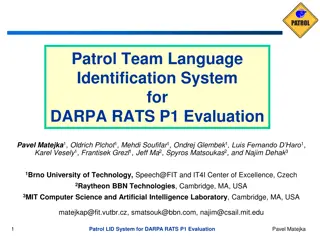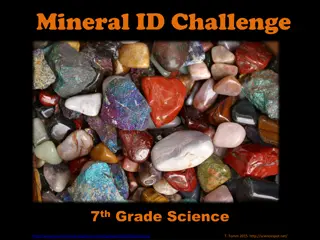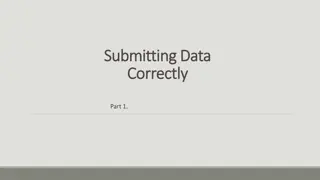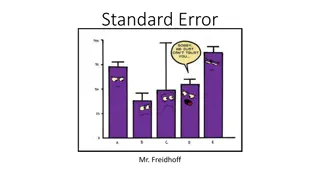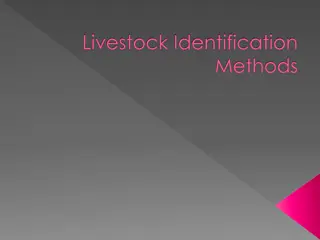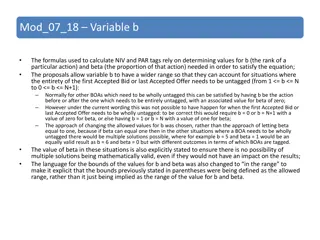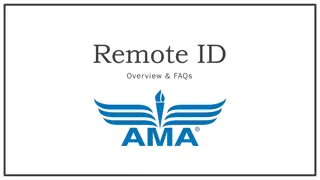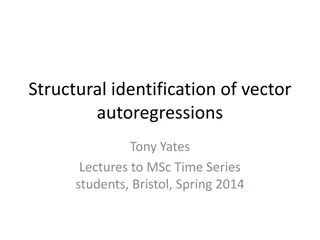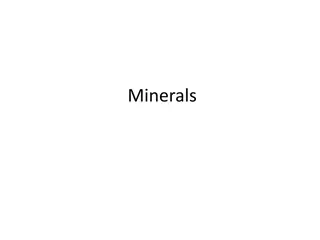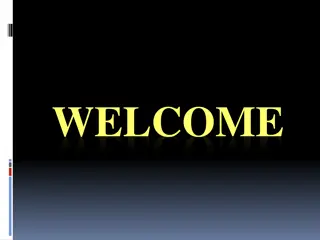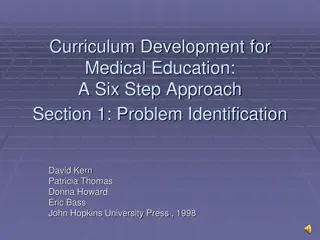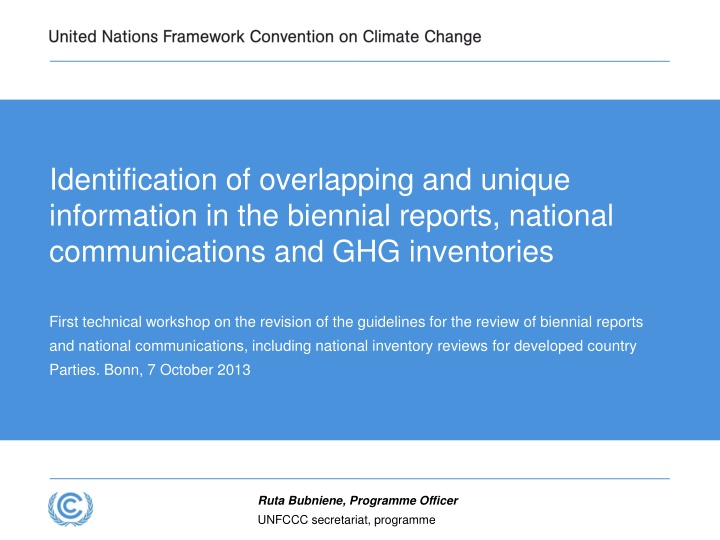
Unique Information in Biennial Reports and National Communications
Explore the identification of overlapping and unique information in biennial reports, national communications, and GHG inventories. Learn about the mandate for reporting of NC6 and BR1, GHG emissions and trends, policies and measures, and projections in the context of reporting guidelines for developed country Parties.
Download Presentation

Please find below an Image/Link to download the presentation.
The content on the website is provided AS IS for your information and personal use only. It may not be sold, licensed, or shared on other websites without obtaining consent from the author. If you encounter any issues during the download, it is possible that the publisher has removed the file from their server.
You are allowed to download the files provided on this website for personal or commercial use, subject to the condition that they are used lawfully. All files are the property of their respective owners.
The content on the website is provided AS IS for your information and personal use only. It may not be sold, licensed, or shared on other websites without obtaining consent from the author.
E N D
Presentation Transcript
Identification of overlapping and unique information in the biennial reports, national communications and GHG inventories First technical workshop on the revision of the guidelines for the review of biennial reports and national communications, including national inventory reviews for developed country Parties. Bonn, 7 October 2013 Ruta Bubniene, Programme Officer UNFCCC secretariat, programme
Mandate for reporting of NC6 and BR1 Reporting requirements: Common tabular format for UNFCCC biennial reporting guidelines for developed country Parties (decision 19/CP.18) UNFCCC biennial reporting guidelines for developed country Parties (Annex, decision 2/CP.17) For KP Parties: Guidelines for the preparation of the information under Art. 7 of the Kyoto Protocol (Annex, decision 15/CMP.1). (The proposed approach does not affect reporting on Article 7.2 that should continue in accordance with the existing GL and annotated outline for NC5) UNFCCC reporting guidelines on national communications (FCCC/CP/1999/7) Submission due date 1 January 2014 for NC6 (9/CP.16) and BR1 (2/CP.17)
GHG emissions and trends fully overlapping information National communication Biennial report (BR) Full overlap III. GHG inventory information II. Information on GHG emissions and trends Summary information, Time-series (base year/1990 - 2011) consistent with inventory, explanation of differences (para.2) Table 1 (CRF table 10) Summary information, time-series (base year/1990 - 2011), consistent with inventory explanation of differences (para.10) Emission trend tables (para.11) Descriptive summary, diagrams, factors underlying emission trends (para.12) Consistent with annual inventory (para 10.) National inventory arrangements (NIA) (para.3), Changes in NIA (para.3)
Policies and measures partially overlapping information National communication Biennial report (BR) Partial overlap IV. Policies and measures IV. C. Policy making process IV.D PaMs and their effects Policy context, targets (para.20) III. QEWER target IV. Progress in achievement of QEWER target Description of QEWER target (paras. 4, 5), CRF Table 2a-f Mitigation actions and their effects (para. 6), CRF Table 3 P&M and their effects (paras. 22, 23, 24,25) Unique info in NC6 Description of progress monitoring and evaluation of PaMs (para. 21) P&M no longer in place(para.26) Unique info in BR1 Estimates of emission reductions and removals and the use of units from market based mechanisms and ULUCF (paras. 9, 10), CRF Tables 4 Changes in domestic institutional arrangements (para. 7) To extent possible, information on response measures (para. 8)
Projections full overlapping information National communication Biennial report (BR) Full overlap V. Projections and the total effect of PaMs Description of projections for the year 2005, 2010, 2015, 2020 (paras. 27-41) Methodology (paras. 42-46) V. Projections Updated projections for 2020 and 2030 consistent with NC GLs (para. 11), CRF table 6 Changes in models or methodologies (para. 12) CRF table 5 Key underlying assumptions (para.47)
Provision of financial resources partially overlapping information National communication Biennial report (BR) Partial overlap more details in BR VII. Financial resources and transfer of technology Information on provision of financial resources (para. 50), New and additional (para. 51) assistance to developing Parties that are vulnerable to climate change (para 52); Bilateral, regional and other channels (tables 4, 5) (para. 53) Finance Provision of financial, technological and capacity building support consistent with NC GLs section VII. Requirements; show how the support is new and additional (para 13) Allocation channels, sector, status, types of instruments (paras. 17-18, 20), CRF table 7 Support to meet specific needs arising from response measures
Provision of financial resources partially overlapping information National communication Biennial report (BR) Partial overlap more details in BR Unique info in BR1 on finance National approach for tracking the provision of FTCB support (para. 14) Description of methodology used (para. 15) To extent possible, how resources address the needs of NAI Parties (para.16) To the extent possible on private financial flows (para. 19)
Transfer of technology fully overlapping information National communication Biennial report (BR) Full overlap VI. D. Activities related to technology transfer Report details on measures [ ] for transfer, access to environmentally sound technologies (para 54.); provide info in Table 6, and on hard and softtechnologies (para 55.) Clearly distinguish between activities undertaken by public and private sectors (para. 54) VII. B. Technology development and transfer Report on measures .. to transfer, access and the deployment of [ ] climate friendly technologies (para. 21), CRF table 8 To the extent possible the sources of technology transfer from thepublic or private sectors and shall distinguish between activities undertaken by the public and private sectors (para. 22) Support development and enhancement of endogenous capacities and technologies (para. 21) Support development and enhancement of endogenous capacities and technologies (para. 56)
Overlapping information BR1 / NC6 overlapping Description of quantified economy-wide emission reduction (QEWER) target GHG emissions and trends PaMs Projections and total effect of PaMs Provision of financial and technological support to developing country Parties Unique info in NC6 National circumstances V&A Unique info in BR1 Level of detail in describing QEWER target Level of detail on finance Capacity building Other reporting matters RSO Education, training and public awareness
Approaches to address the review of overlapping information Three options of the structure of review report: a) The technical assessment by technical content; b) The technical assessment by reporting guidelines; c) The technical assessment by reporting elements of the relevant guidelines grouped by technical content.
The technical assessment by reporting elements of the relevant guidelines grouped by technical content Part I. Overview: Assessment of completeness and transparency Part II. Technical assessment of the reviewed elements for BR, NC and supplementary information under the KP A. GHG emissions and national circumstances B. QEWER targets C. PaMs D. Projections and total effect of PaMs E. Provision of financial, technological and capacity building support Part III. Technical assessment of the reviewed elements specific for NC only Part IV. Summary of the reviewed elements specific to KP only Part V. Conclusions and recommendations
Conclusions BR is an elaboration of NC taking into account 10 years of experience of reporting and review; BR requests greater level of details on QEWER target and on finance; Essential elements (GHG, PaMs, projections, support) fully or partially overlap between NC and BR; Submitted NC6/BR1 by one Party proofs that information in BR1 and NC6 overlaps to great extent; Options to conduct reviews of NC6 and BR1 in conjunction and to review identical information only once should be made operational

